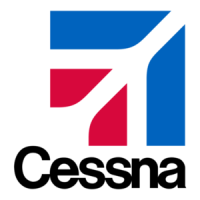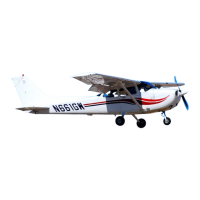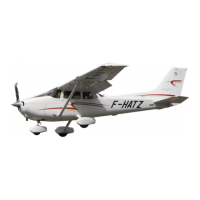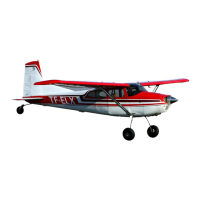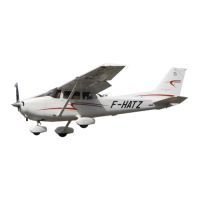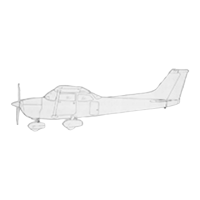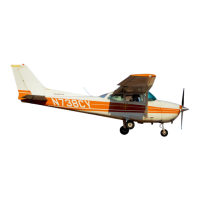CESSNA
MODEL 182T NAV
Ill
SECTION
3
EMERGENCY PROCEDURES
LANDING WITHOUT ELEVATOR CONTROL
Trim for horizontal flight with an airspeed of approximately 80 KlAS
by using throttle and elevator trim controls. Then
do not change
the elevator trim control setting;
control the glide angle by
adjusting power.
During the landing flare (round-out), the nose will come down when
power is reduced and the airplane may touch down on the
nosewheel before the main wheels. When in the flare, the elevator
trim control should be adjusted toward the full nose up position and
the power adjusted at the same time so that the airplane will rotate
to a horizontal attitude for touchdown. Close the throttle at
touchdown.
FIRES
Improper starting procedures involving the excessive use of
auxiliary fuel pump operation can cause engine flooding and
subsequent collection of fuel on the parking ramp as the excess fuel
drains overboard from the intake manifolds. This is sometimes
experienced in difficult starts in cold weather where engine preheat
service is not available. If this occurs, the airplane should be
pushed away from the fuel puddle before another engine start is
attempted. Otherwise, there is a possibility of raw fuel
accumulations in the exhaust system igniting during an engine start,
causing a long flame from the tailpipe, and possibly igniting the
collected fuel on the pavement. If a fire occurs, proceed according
to the checklist.
Although engine fires are extremely rare in flight, if a fire is
encountered, the steps of the appropriate checklist should be
followed. After completion of the checklist procedure, execute a
forced landing. Do not attempt to restart the engine.
'The first sign of an electrical fire is usually the smell of burning
insulation. The checklist procedure should result in the elimination
of the fire.
U.S.
3-25
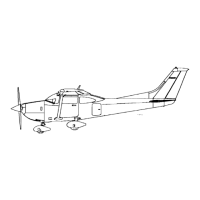
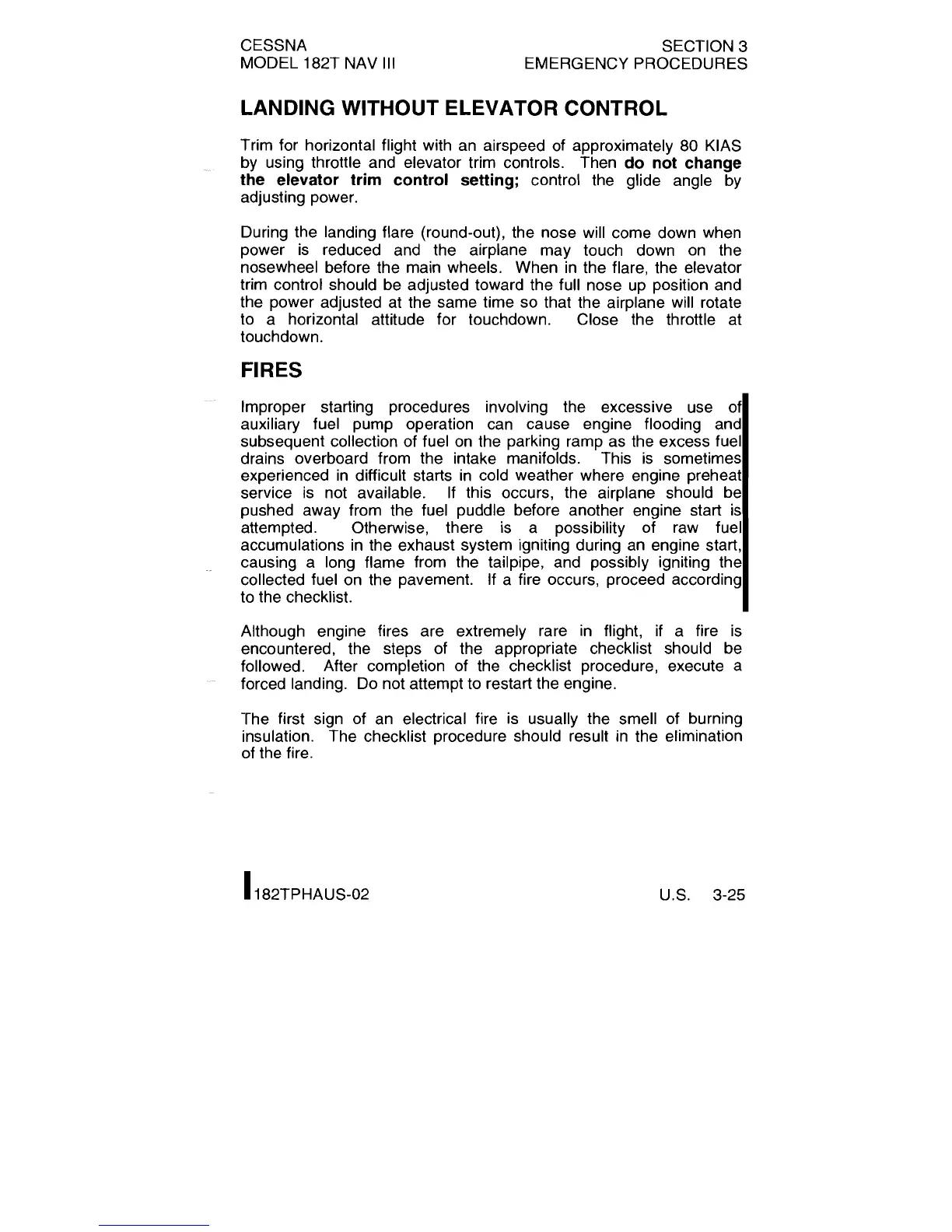